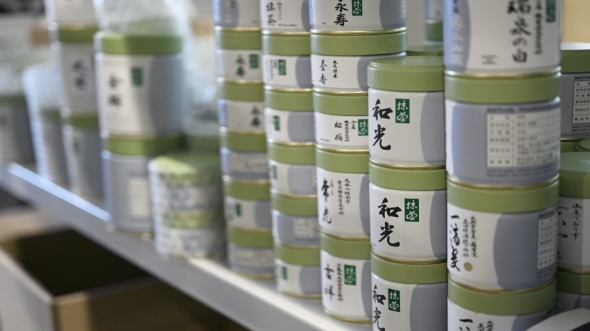Kyo-yaki and Kiyomizu-yaki
The traditional hand made and painted ceramics made in Kyoto are called Kyo-yaki or Kiyomizu-yaki.
Kyo-yaki and Kiyomitu-yaki are general categories. In the Kyoto basin - surrounded by three mountains -, there are different areas where they make ceramic pots and utensils. Based on the name of the area the ceramics were given a general name too, such as Omuro-yaki, Shibataguchi-yaki or Otakiike-yaki. The umbrella term for these is Kyo-yaki.
Kiyomizu-yaki, from Kiyomizu-dera (Kiyomizu temple) is also one of the Kyo-yaki areas. As it is very famous (mostly for the porcelain Kiyomizu-yaki) it became the representative of all Kyo-yaki, and after a while the name Kiyomizu-yaki was used for all Kyo-yaki.
Originally Kiyomizu-yaki was mostly kitchen ware, so in the world of tea it is rarely used for teaware, they are rather called Kyo-yaki still.
How did Kyo-yaki begin?
Kyo-yaki was not a necessity in the lives of the people of Kyoto. After the wars, when Kyo-yaki bagun, pottery was already done in most areas in Japan known for their ceramics. Edo became the political capital. There was no financial capital in Kyoto for pottery, no practical need for it in the everyday lives. Why did Kiyomizu-yaki start then?
There was a higher class in Kyoto with a lot of capital. While Edo was the political capital, Kyoto and Osaka were cultural and economic centres. The high class of these cities had business dealings with other countries and accumulated fortunes. They would meet in salons where they would bring ceramics from other Asian countries like China and Korea. These became status symbols.
This is what the ceramic culture of Kyoto was based on. It is believed that the high interest in Far-Eastern ceramics led to making ceramics in Kyoto. After the Momoyama period the tea.ceremonies became very popular. The tools used at ceremonies represented new value, and due to the high demand they had to start making tea utensils. The high class had the chance to use their fortunes and economic power to support their preferences. The word “Kyo-yaki” was already used around 1600.





